The terminal block is an insulated frame that connects two or more wires. It provides a safe connection for carrying out the rated current through the terminals of the block. To avoid spark-over & fire, the proper connections need to make.
The terminal block is the best to use for eliminating the safety hazard and for easy troubleshooting of the fault.
It is possible to connect the two or more wires without the use of the terminal block. Stripping the insulation of the wires & twisting them together also provides the electrical connection. Do you think this is safe to use the electrical connections in this way?
I think this will just make the connections intricate and not even convenient for further troubleshooting in the case of fault. The reliability of such a system is absolutely nil.
In this situation, with the use of a terminal block, we can enhance the safety of the system.
Table of contents
What is a Terminal Block?
A terminal block is a modular insulated block that connects two or more wires together. It has a clamping component & a conducting strip. The image of the terminal block is shown below.
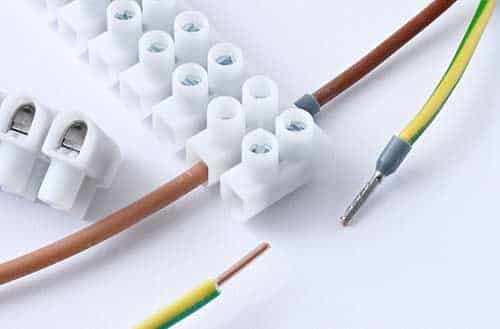
A conducting strip is housed inside the insulating block. It also provides a base for the clamping elements. After stripping the insulation, the wire is inserted into the terminals and tightened with the help of a screw. Thus, there is no chance of the looseness of connections. The terminal block can be mounted on PCB (Printed Circuit Board) & it is also possible to unmount the block from PCB.
Most of the terminal blocks are modular and can be mounted on DIN rail. Thus, it is possible to mount more blocks as per the requirement. The terminal block provides safe & well-organized wiring.
Types Of Terminal Blocks
Electrical terminal blocks can be classified on the basis of ;
- Structure
- Device type,
- Termination options
Structure Type block Terminal

Single level pass-through terminal blocks
These blocks connect two wires together. The block is also called a single feed terminal block. It has one input and one output contact.
Dual level terminal blocks
On a single-level pass-through terminal block, one set of terminals is stacked on the first one. Thus, it saves space.
Three level terminal blocks:
When one more terminal lock is added to the dual-level terminal block, it becomes the three-level terminal block. The multilevel terminal block saves space.
Types of Terminal Block- Device Type
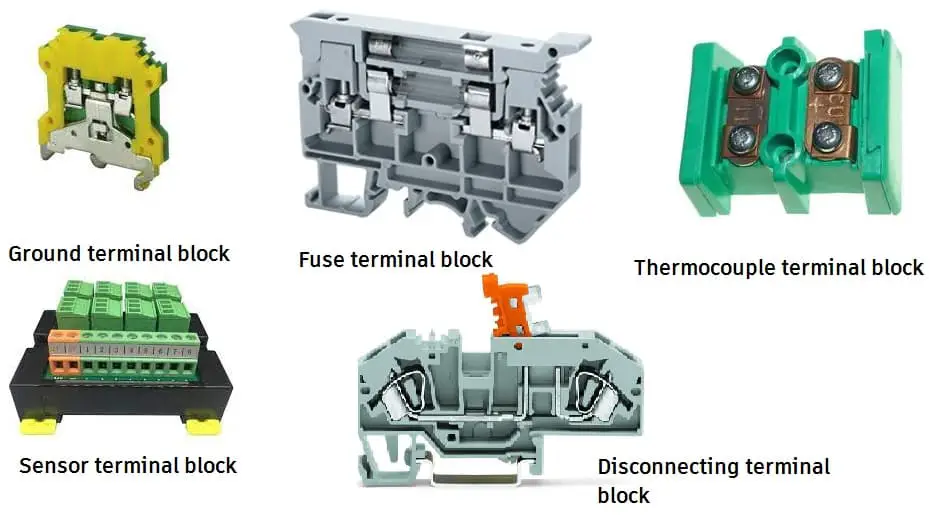
Ground Terminal Blocks
Grounding terminal blocks mechanically and electrically connect wires to the DIN rail through a conducting clamping foot. In this way, the DIN rail functions as a ground bus bar. Grounding terminal blocks are in green and yellow per international standards.
Fuse Block Terminal
These Terminal Blocks are used in electrical and control systems which require fuse protection.
Thermocouple Terminal Blocks
We use Thermocouple Terminal Blocks with thermocouple wires for temperature measurement applications. As per DIN 43713 & DIN 43714, the current-carrying element of the Terminal Block is made of the same material as the thermocouple wire. These special current-carrying elements ensure that there is no loss of potential at the connecting points.
I/O Blocks And Sensor Blocks
I/O terminal blocks make a connection between a device and a controller. The sensor blocks handle three or four-wire devices such as proximity sensors.
Types of Terminal Block- Disconnect Terminal Blocks
The disconnecting terminal blocks are used for those applications where there is a need for disconnection. The disconnection can be easily established just by lifting a lever or knife switch.
Power Distribution Blocks
Power distribution blocks distribute a primary power input into several secondary outputs. They are widely used in enclosed equipment such as electrical panels, machinery, and HVAC systems.
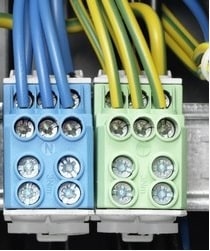
One large rating wire is connected at the input terminal and multiple output terminals are provided at the output. Thus, the power distribution blocks provide safe and well-arranged wiring.
Clamping Options In Terminal Blocks
Screw terminals
The screw on the terminal block is used to tighten the wire or conductor inside the terminal block.
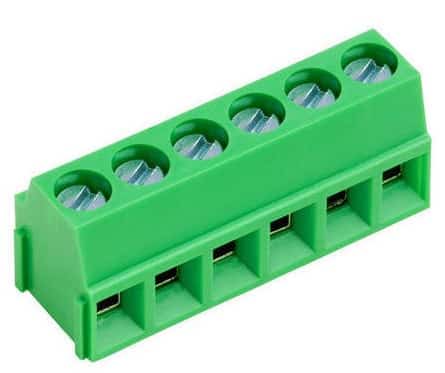
This type of clamping option is widely used. Screw terminals accommodate a very wide range of wire or conductor sizes.
Spring Clamp
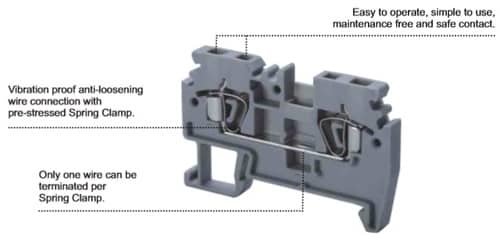
The spring pressure is used to retain the wire properly clamped. It is generally used for lower rating applications, however, for power applications, the spring clamp terminal blocks are available in the market.
Push-in terminal blocks
With Push-in connection technology, you can connect conductors from 0.25 mm² easily – both directly and without tools just by inserting the screwdriver into the release hole. The special contact spring allows easy insertion and guarantees a high level of contact quality.
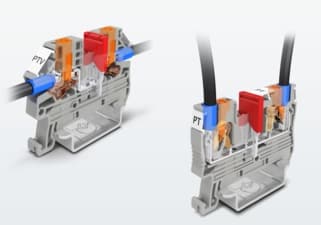
Key Advantages are ;
- Time-saving connection of pre-treated and rigid conductors with tool-free direct connection technology
- Convenient insertion with 50% lower insertion force
- Safe wiring and operation with color-coded push button
- The conductor can be easily released without special tools
- Reduction in logistics costs
- Terminal blocks with Push-in connection are part of the COMPLETE line system
Insulation Displacement Connector ( IDC )
IDC is an electrical connector that connects conductors of insulated cable. There is no need for stripping of the conductor insulation.
The two sharp metal blades inside the terminal cut through and make a connection. Thus, it reduces the time-consuming process of stripping the conductor insulation.
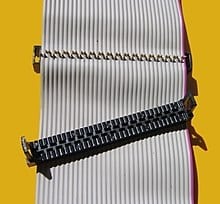
Barrier Terminal Block
Barrier terminal block is used in power system. A spade or ring terminal is attached to the wire and then inserted into a bolt and tightened with a nut on the terminal block.
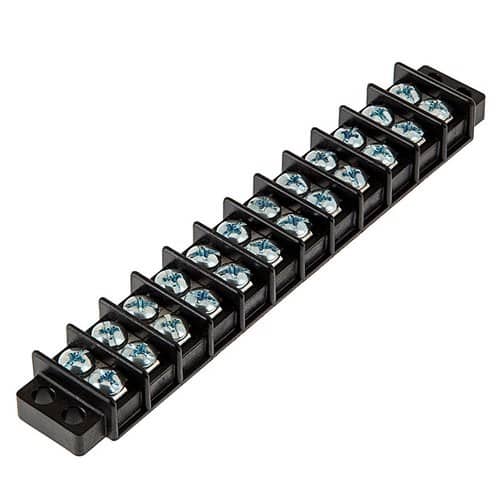
This prevents loosening of the wire due to vibrations.